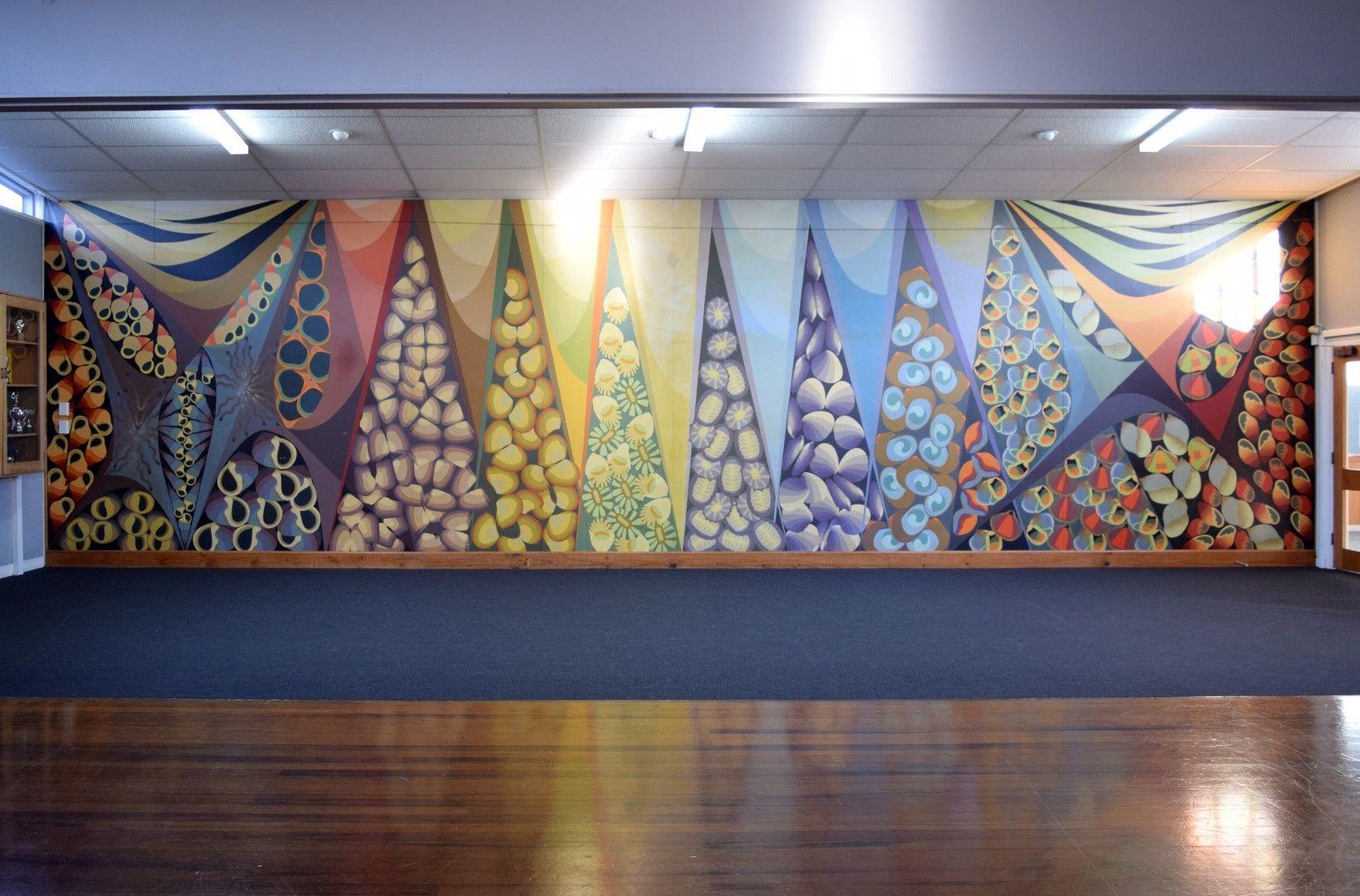Title unknown
John Hovell
Type
- Mural
Medium
- Acrylic paint
- Hardboard/HDF
Dimensions
- H3200 x W12,200mm

John Hovell, title unknown (1987), Huntly College ~ Te Kura Tuarua O Rahui Pokeka, Rahui-Pōkeka Huntly
Images: Bronwyn Holloway-Smith, Public Art Heritage Aotearoa New Zealand, 2022


- DETAILS
- MAP
Description
This mural was painted by artist John Hovell when he was a relieving art teacher at Huntly High School.
Damian Skinner explains:
“The subject is shells, which become elements in Hovell’s own kōwhaiwhai experiments – his attempt to create a new language of kōwhaiwhai forms that are not like existing kōwhaiwhai yet are generated by the same design principles and conceptual frameworks. In a text about the Huntly College mural, written in 1987, Hovell states:
'The significance of shells should be examined in historical, social, survival, archeological, environmental, geological and creative-artistic terms. These small objects have always held a powerful attraction for humans, partly because of their intrinsic beauty and their portability, partly because of their manifold uses – as food units, as a source of dyes, as recyclable decorative material, as money and a barter-exchange commodity, and partly because they are available as decorative-design samplers (in the way that pigment manufacturers’ colour charts are) or barometric print-outs of the seasonal vicissitudes that affect both man and animal. The life-span of many seashell animals is roughly equivalent to that of man (say, 25-30 years): so man is able to read the record of the same environmental forces that have shaped his life in these small portable "books". One generation of man may be the life-span of a mollusc.'[1]
Hovell’s interest in shells takes two forms: a close attention to colour and, especially, to the way in which shells act as a 'convenient units of colour-identification, particularly as each is likely to mark an exquisitely graded section of a colour continuum'; and a careful observation of 'processes of settling and deposition on seabeds, or the not-so-random accretions of middens where are piled up the waste products of human activities.' This explains the Huntley College mural’s vivid colouration and its division into vertical elements of stacked shells, like core samples or the evidence of an archaeological dig. 'A study of traditional patterns and design of Oceania, and all the artefacts of Pacific peoples show this prevalence of seashore motifs, indicate an acute degree of close observation – on the part of ancestral pattern-makers – of shellfish life and shell forms,' writes Hovell, 'perhaps because these small and often beautiful objects could be held in the hand, turned over, seen from all perspectives; therefore they embodied a human dimension or relevance in terms both useful and aesthetic.'[1]"
[1] John Hovell's unpublished text ‘Huntly College Mural: Theme and Details, 11 December 1987.’
~ cited in Damian Skinner in The Passing World the Passage of Life : John Hovell and the Art of Kōwhaiwhai. (Auckland: Rim Books 2010.)
